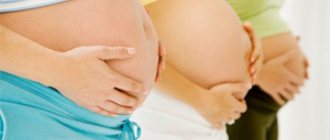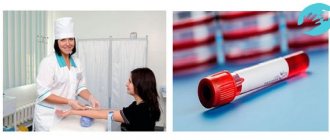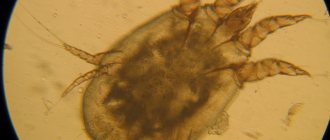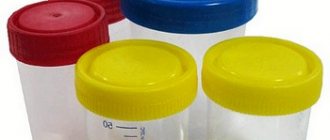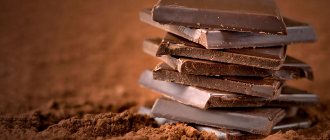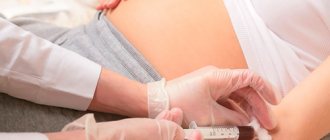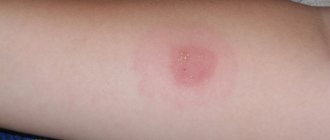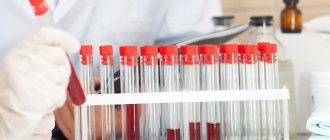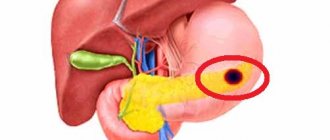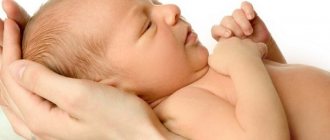The level of bilirubin in the blood of a newborn makes it clear how properly the child’s internal organs function. A high level of pigment, which will require immediate therapeutic intervention, will be indicated by the yellowish color of the baby's skin. Parents should know the normal level of bilirubin in newborns, the causes and consequences of its increase in the child’s blood, and how to cope with this problem.
Is jaundice in newborns dangerous?
Neonatal jaundice is common among healthy newborns, and most cases are physiological. In adults and a small proportion of newborns, jaundice is pathological, that is, it means the presence of a disorder that causes it. Some of the most common causes of newborn jaundice include:
Physiological:
- Physiological hyperbilirubinemia.
- Breastfeeding jaundice.
- Breast milk jaundice.
Pathological:
- Hyperbilirubinemia due to hemolytic disease.
- Liver dysfunction (eg, caused by parenteral nutrition causing cholestasis, neonatal sepsis, neonatal hepatitis).
Physiological hyperbilirubinemia occurs in almost all newborns. The shorter lifespan of red blood cells in newborns increases bilirubin production, and low levels of bacterial flora in the intestines (which convert bilirubin into an insoluble form)
in combination with increased hydrolysis of conjugated bilirubin, they increase enterohepatic circulation, as a result of which the liver will not be able to cope with excess incoming bilirubin. As a result, bilirubin levels may rise to 308 µmol/L by 3–4 days of life (by 7 days in Asian infants) and then decline.
Breastfeeding jaundice develops in one sixth of infants during the first week of life. Breastfeeding increases the circulation of bilirubin from the intestines to the liver in some infants who do not consume enough milk and who are dehydrated and calorically deficient.
Jaundice from breast milk is different from jaundice from breastfeeding. It develops after the first 5-7 days of life and reaches a peak after about 2 weeks. It is thought to be caused by increased concentrations of beta-glucuronidase in human breast milk, which causes an increase in the conversion of insoluble bilirubin back to the soluble (unconjugated) form and its reabsorption in the colon.
Normal indicator in the 1st month
Bilirubin levels depend on the age of the baby. If the level of this substance is increased in newborns, then the norm of bilirubin in a one-month-old baby reaches the correct readings.
The rate of bilirubin in newborns at 1 month should be the same as in adults - from 3.5 to 20.5 µmol/l. This is due to the normalization of metabolic processes and improved functioning of the digestive and excretory systems.
A newborn who has reached the age of 1 month begins to produce enzymes that help transform indirect bilirubin into direct bilirubin and remove it from the body with urine and feces. The secretion of bile by the gallbladder is also improved.
Since bilirubin increases due to massive destruction of red blood cells, the levels increase in newborns. But over time, the number of red blood cells normalizes, and the bilirubin level stops increasing. Excesses of this substance are eliminated from the body thanks to all of the above physiological processes, and the pigment level is normalized.
Phototherapy - treatment of jaundice at home.
For phototherapy of newborns, special blue light lamps (photoirradiators) are used. Treatment takes several days, the duration of therapy is determined by a pediatrician. Photoisomerization of bilirubin occurs in the skin, therefore, the larger the body area used for phototherapy, the more effective the treatment process. The lamp is a bath made of harmless plastic, in the base of which blue light lamps are mounted.
We have prepared an article about phototherapy, as well as information on where to rent a device in St. Petersburg: Phototherapy at home - treatment of jaundice
Types of bilirubin
Doctors usually divide bilirubin in newborns into two types. Let's see what their differences are:
- The body excretes direct bilirubin in feces and urine. It received its name in connection with the method of its identification. In laboratory studies, Ehrlich's diazo reagent is added directly to the blood.
- The indirect (unconjugated) pigment interacts with albumin and enters the liver. Then in this organ it transforms into type 1 and is excreted in the same way. This type of pigment is not soluble in water, so laboratory tests require the use of additional reagents.
When an infant's bilirubin is elevated during the first days of life, this is not a cause for concern. However, there are parameters for normal indicators relative to the age of the child. Therefore, specialists often conduct tests to monitor bilirubin surges.
How to distinguish physiological jaundice from pathological?
Jaundice that develops in the first 24-48 hours of life or persists longer than 2 weeks is most likely pathological.
Jaundice that does not appear until 2–3 days of life is most likely physiological.
An exception is pathological jaundice due to Crigler-Najjar syndrome, hypothyroidism or drug exposure, which also manifests itself after 2-3 days. In this case, the bilirubin concentration peaks in the first week, increasing at a rate of up to 86 µmol/L per day, and may persist for a long period.
Correction and treatment
In the postnatal period, the child is examined every 9-10 hours during the first 3 days. also necessary to observe the correct thermal regime (do not overcool or overheat). It is important for a mother to properly organize breastfeeding, apply it to the breast as often as possible and not supplement with water.
Jaundice associated exclusively with breastfeeding occurs in 3–5% of children, can persist up to 12 weeks of life and does not require drug therapy or cessation of breastfeeding.
For the treatment of neonatal jaundice it is used
- Phototherapy.
- In severe cases, a replacement blood transfusion is required.
Phototherapy takes place in a shared ward, where a special box with ultraviolet lamps is brought.
To do this, you need to undress the baby naked and protect his eyes with a light-proof bandage. The little patient lies there for the amount of time set by the doctor with mandatory breaks for feeding (at least 8 times a day).
A simple blood test allows you to determine the level of indirect and total bilirubin in the first days after birth
Monitoring during therapy
- Body temperature control.
- It is necessary to weigh yourself at least once a day.
- After each feeding, be sure to change the position of the baby's body.
- Laboratory research in dynamics (blood test).
When a child has elevated monocytes in a blood test, read here what the numbers say and what diseases it is a sign of.
If the dynamics of observation and treatment are positive, the mother and baby are discharged in the same way as ordinary children, subject to further consultation with a pediatrician . In the first month, you can consult with the doctor who treated the patients in the maternity hospital.
What should be the normal hemoglobin level for a child? You can find out the indicators for different ages by following the link to the article.
If hemoglobin is low, then in this article you can find out the reasons and the choice of the optimal treatment method.
Our material will help you understand the indicators of a general blood test.
Diagnosis of jaundice in children
The diagnosis of hyperbilirubinemia is suspected by the color of the infant's skin and whites of the eyes and confirmed by measuring serum bilirubin.
The level of serum bilirubin required to cause jaundice varies depending on skin tone and body area, but jaundice usually becomes visible on the whites of the eyes when higher than normal and concentrations range from 34 to 51 µmol/L, and on the face from approximately 68 to 86 µmol/l. As bilirubin levels increase, jaundice progresses from the head to the feet, appearing in the umbilicus at approximately 258 µmol/L and in the legs at 340 µmol/L.
Bilirubin concentration > 170 µmol/L in preterm infants or > 308 µmol/L in full-term infants requires additional tests: hematocrit, blood smear, reticulocyte count assessment, direct Coombs test, total serum bilirubin and serum direct bilirubin concentration, blood group and Rh comparison -baby and mother factors.
Consequences of jaundice in newborns
Let's find out why jaundice is dangerous. Bile pigment is not water soluble and can accumulate in fat cells. When there is a critical excess of bilirubin, some is deposited in the nuclear zones of the newborn’s brain, causing intoxication and severe damage. There are five degrees of severity, the last indicating kernicterus.
| Degree | Bilirubin concentration, µmol/l | Localization of yellowness |
| I | up to 100 | face, neck |
| II | up to 150 | to the navel area |
| III | 200-205 | upper thighs |
| IV | more than 300 | all parts of the body except the palms and soles of the feet |
| V | more than 400 | total yellowness |
This is interesting: Jaundice: is it transmitted from person to person or not?
Signs of kernicterus.
- Increased tone, muscle twitching.
- Bulging of a large fontanel.
- Monotonous scream.
- Rolling eyes.
- Respiratory failure.
The consequences for the newborn are serious. Even short-term hypoxia of the brain leads to irreversible changes.
- Cerebral palsy.
- Paresis.
- Impaired mental function.
- Physical developmental delay.
- Mental retardation of varying degrees.
- Hearing loss or total deafness.
Is physiological jaundice dangerous in infants?
Although the increase in bilirubin concentration in physiological jaundice is not caused by disease and goes away over time, hyperbilirubinemia is neurotoxic, that is, it causes damage to nerve cells in the child. For example, high concentrations of bilirubin in the blood can cause acute encephalopathy, accompanied by a variety of neurological disorders, including cerebral palsy and sensorimotor impairment. An even more severe consequence of the neurotoxicity of elevated bilirubin concentrations may be kernicterus, caused by the deposition of free (unconjugated) bilirubin in the basal ganglia and nuclei of the brain stem. Typically, bilirubin bound to serum albumin remains in the intravascular space, but sometimes it can cross the blood-brain barrier:
- With a high concentration of bilirubin in the serum (acute or chronic).
- When the concentration of serum albumin decreases (for example, in premature infants).
- When bilirubin is displaced from albumin by competitive binders (drugs:
- sulfisoxazole, ceftriaxone, aspirin) or free fatty acids and hydrogen ions (for example, in malnourished and starving children).
For neonates born at less than 35 weeks' gestation, the threshold bilirubin levels for treatment are lower because preterm infants are at greater risk of neurotoxicity.
What kind of “beast” is this - bilirubin?
In simple terms, bilirubin is a breakdown product . It is formed as a result of the breakdown of red blood cells, or more precisely, red blood cells.
Using its indicators in the blood or bile, they learn about the condition of vital organs, such as the liver and spleen, as well as about metabolism and the body as a whole. That is why newborns must be tested for bilirubin levels.
There are three indicators by which biochemical analysis is read:
- Direct – passed directly through the liver cells.
- Indirect - formed outside the liver in the hematopoietic organs.
- General – the combination of the first and second indicators.
Based on the condition of the skin, parents will not be able to determine whether there is jaundice or not . Only a blood test and a pediatrician, who will receive the results of the analysis decoding from the laboratory assistant, can tell about this. Therefore, you should not worry ahead of time.
The dangers of elevated bilirubin levels
You need to know that persistent and prolonged excess of bilirubin levels in a child can negatively affect his health. As a result, toxic damage to the baby’s central nervous system may occur. If measures are not taken in time and urgent treatment is not started, hyperbilirubinemia in newborns can result in the following pathologies:
- dementia,
- paralysis,
- complete deafness,
- oligophrenia.
- nuclear jaundice (toxic damage to the central nervous system),
- convulsions.
As you can see, the consequences of the problem are indeed serious. Therefore, it is important to take adequate measures on time and treat the child under the supervision of an experienced specialist.
Rules for taking analysis
How to donate blood for bilirubin in newborns? This question often interests young mothers.
There are several features of collecting and testing blood for bilirubin in newborns :
- the first analysis is taken immediately after birth, from the umbilical cord;
- to obtain reliable data, you cannot feed the child for 3-4 hours before donating blood;
- the analysis is taken by puncturing the heel with a special needle;
- All fractions of bilirubin are determined.
A device for measuring bilirubin in newborns consists of a special needle for drawing blood from the baby's heel and a vacuum tube.
If, against the background of yellowing of the skin, parents, even without laboratory data, see the baby’s drowsiness, motor restlessness, convulsive twitching, monotonous crying, or refusal to breastfeed, it is necessary to urgently contact a pediatrician and take a biochemical blood test. Doctors should be alert to an enlarged liver and spleen, tachycardia, low blood pressure, and retarded physical and mental development of the child.
